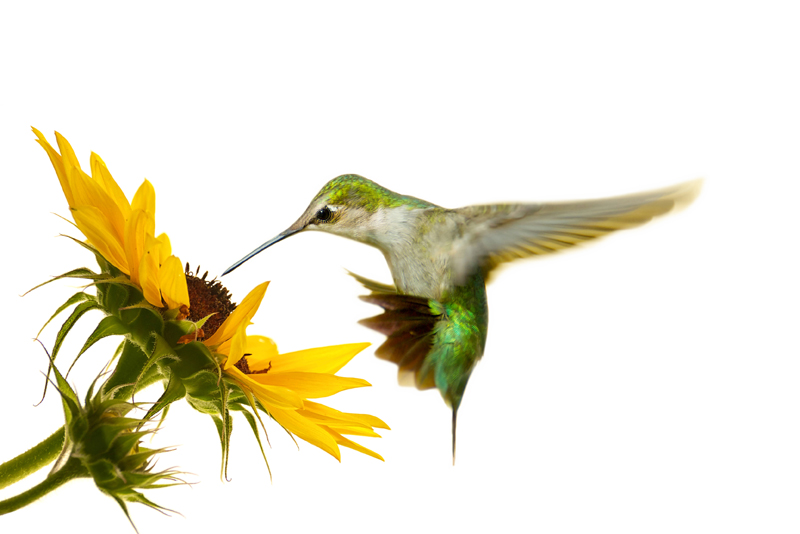Directional Stitching

Directional stitching and its importance is one of those sewing terms and processes that can be easily overlooked. In this age of mass-market retailers fast fashion race to produce inexpensive clothing and get it all to consumer's quickly, home sewers have a slight advantage. By paying attention to the direction and in which order machine stitching occurs, garments can have smoother opposite seams that don't twist the fabric after first washing and finishing details - like collar points that lie flat and match, revealing an attention to detail noticeably missing in today's ready-to-wear garments.
Shirt collars that will lay perfectly flat should have the stitching begin at the center back of the neckline and sewn to one edge, then return to center back and sew the other side once again to the remaining neck edge. Otherwise, the one side of the collar that will not lay neatly flat that has been stitched continuously from one side of the neck edge to the other leaves half of the collar stitched against the direction of the fabric grain.
Somewhat hard to believe however that by just beginning stitching a collar from the center back neckline to the collar edge then returning to the center back and stitching the remaining unstitched portion of the collar in the opposite direction to complete the collar attachment to the neckline prevents a slight distortion of the fabric pieces as they pass between the underside of the sewing machine's presser foot and the top of the throat plate on the machine bed.
Sewing in the direction of the fabric's grain, from the widest point of the fabric section to the narrowest, especially when the cut fabric pieces are angled or curved, helps greatly to limit fabric stretching during the stitching process. Many commercial tissue patterns often have arrows outside the seam lines indicating what direction to begin stitching the seam. Helpful information to pay particular attention to.
Following the directional stitching lines on a pattern as well as adhering to instructions to staystitch - a short single line of stitching usually on a stitching line through a single fabric layer, along a bias or curved seam (think princess seams and waistline seams too) will prevent the fabric from unintentional stretching during assembly of the fabric layers and subsequent stitching of the seam. Those collar points in particular may not match exactly as desired if directional stitching overlooked.
A note on staystitching - here is where stitching as directed on the pattern's drawn stitching line for the short distance indicated will become apparent since varying from the stitching line while sewing seams together will show the staystitching peeking out and highly visible on the garment’s right side once the finished seam is pressed and folded to the underside of the garment. Sure, the staystitching at this point could be picked out (we have all done this) however it should be evident to the sewer that the expected 5/8-inch seam (or whatever the designated pattern’s seam line width) is short of the mark. Not stitching on the stitching line can potentially have an undesirable cascade effect, especially around the armscye, neckline edge and princess seaming since subsequent crossing seams will not exactly match up as expected.
If it is difficult to determine the grain of fabric, particularly in woven fabrics, simply run a finger along a cut fabric edge. The seam edge will lie smoothly in the grain direction and slightly pop up against the grain.
A potential exception to directional sewing and its relation to a fabric’s grain is sewing fabric that has a nap or deep pile. Best to follow a pattern’s suggestion should one be provided.
Directional stitching as a printed pattern indicates or if sewing a hand drawn pattern-less garment (paying attention to a fabric’s grain) will limit any puckering or ripples in the finished seam. Makes for a more precisely stitched garment and as a plus, pressing those seams a breeze too!
Sew happy, sew inspired.
Shirt collars that will lay perfectly flat should have the stitching begin at the center back of the neckline and sewn to one edge, then return to center back and sew the other side once again to the remaining neck edge. Otherwise, the one side of the collar that will not lay neatly flat that has been stitched continuously from one side of the neck edge to the other leaves half of the collar stitched against the direction of the fabric grain.
Somewhat hard to believe however that by just beginning stitching a collar from the center back neckline to the collar edge then returning to the center back and stitching the remaining unstitched portion of the collar in the opposite direction to complete the collar attachment to the neckline prevents a slight distortion of the fabric pieces as they pass between the underside of the sewing machine's presser foot and the top of the throat plate on the machine bed.
Sewing in the direction of the fabric's grain, from the widest point of the fabric section to the narrowest, especially when the cut fabric pieces are angled or curved, helps greatly to limit fabric stretching during the stitching process. Many commercial tissue patterns often have arrows outside the seam lines indicating what direction to begin stitching the seam. Helpful information to pay particular attention to.
Following the directional stitching lines on a pattern as well as adhering to instructions to staystitch - a short single line of stitching usually on a stitching line through a single fabric layer, along a bias or curved seam (think princess seams and waistline seams too) will prevent the fabric from unintentional stretching during assembly of the fabric layers and subsequent stitching of the seam. Those collar points in particular may not match exactly as desired if directional stitching overlooked.
A note on staystitching - here is where stitching as directed on the pattern's drawn stitching line for the short distance indicated will become apparent since varying from the stitching line while sewing seams together will show the staystitching peeking out and highly visible on the garment’s right side once the finished seam is pressed and folded to the underside of the garment. Sure, the staystitching at this point could be picked out (we have all done this) however it should be evident to the sewer that the expected 5/8-inch seam (or whatever the designated pattern’s seam line width) is short of the mark. Not stitching on the stitching line can potentially have an undesirable cascade effect, especially around the armscye, neckline edge and princess seaming since subsequent crossing seams will not exactly match up as expected.
If it is difficult to determine the grain of fabric, particularly in woven fabrics, simply run a finger along a cut fabric edge. The seam edge will lie smoothly in the grain direction and slightly pop up against the grain.
A potential exception to directional sewing and its relation to a fabric’s grain is sewing fabric that has a nap or deep pile. Best to follow a pattern’s suggestion should one be provided.
Directional stitching as a printed pattern indicates or if sewing a hand drawn pattern-less garment (paying attention to a fabric’s grain) will limit any puckering or ripples in the finished seam. Makes for a more precisely stitched garment and as a plus, pressing those seams a breeze too!
Sew happy, sew inspired.

Related Articles
Editor's Picks Articles
Top Ten Articles
Previous Features
Site Map
Content copyright © 2023 by Cheryl Ellex. All rights reserved.
This content was written by Cheryl Ellex. If you wish to use this content in any manner, you need written permission. Contact Cheryl Ellex for details.







